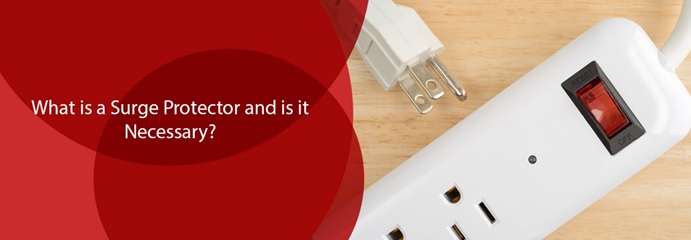What is a Surge Protector, and is it Necessary?

Do you ever worry that a power surge could zap your electronics and home appliances? Because in all honesty, all appliances and electronics at your home are vulnerable to power surges.
A significant enough power surge can cause permanent damage to your electronics by melting the plastic or frying the circuits. Moreover, if there are frequent small surges, you won’t see apparent damage to your electronics, but they will wear down with time.
Whether you want to add more power outlets or an extra layer of protection for your electronics, there comes the point where you’ll eventually need to purchase a surge protector. If you weren’t aware, a surge protector is also known as a spike protector.
Today, there are many options for surge protectors. From features to price range, it’s getting tough to figure out which surge protectors are worth your money. We’ll help you through it by explaining what a good surge protector is and what they offer you.
What is a Surge Protector?
A surge protector is a smaller device that has two primary purposes. The first is that a surge protector provides you with the ability to plug multiple components into a single power outlet.
The second, and most crucial purpose of a surge protector, is to protect your electronic devices like your computer or TV from a high-voltage power surge that is likely to damage these electronics.
In other words, a power surge or spike refers to an increase in voltage which is more than the standard level of electricity flow to your power outlets.
How Does a Surge Protector Work?
There are many types of surge protectors available. However, the most common ones pass the electrical current around the outlet to the number of devices plugged into that particular power strip.
Suppose the voltage for any reason rises above the dedicated level. In that case, the surge protector will divert all the extra flow of electricity into those power outlets with a grounding wire. These wires run parallel to both hot and neutral wires.
They create a pathway for an electrical current to move through if the hot and neutral wires system that carries the current breaks down.
Difference between Surge and Spike
A power surge occurs when the voltage rise stays for three nanoseconds or more. In contrast, a spike is when the increase in voltage only lasts for one or two nanoseconds. However, a surge and a spike both can inflict damage on electronics.
Difference between a Power Strip and Surge Protector
It’s important to know that not every power strip is, in fact, a surge protector. While they tend to look identical, the primary use of a power strip is to add extra outlet space. Understandably, the difference between a power strip and a surge protector is confusing.
So how do you identify them both? The most obvious thing is to look at the product’s packaging to figure which is which. To make things simple, a surge protector should have a joules rating on the packaging.
Joules are the basic unit of measurement when it comes to energy. These are used to measure just how long your appliances and electronics will be protected. Technically, joules tend to work as a reservoir.
When the surge protector does its job, it will take a hit which causes the joules to disappear over time. At times all it takes is one significant power surge to exceed all its limits, and at times it takes several minor surges.
How Long Do Surge Protectors Last, and When to Replace Them?
Keeping track of surges and spikes will inevitably help you know when you should purchase a new surge protector. As mentioned earlier, after an intense power surge, the joules might diminish, meaning it won’t be able to protect your electronics any further.
It is vital that you remember when you had purchased the surge protector. A good surge protector may be able to last longer, depending on the strength or power surges during its timespan.
However, it’s always recommended to replace surge protectors every two years because most will stop providing protection, which puts your electronics at risk. If you’re one of the lucky ones, your surge protector will provide some form of warning or will shut off when the safe protection level drops.
Conclusion
Surge protectors should be on your list of priorities regarding the safety of your home appliances and electronics. Always research the particular surge protector you intend to purchase and know how often your electronics are plugged in each day.

Comments are closed.